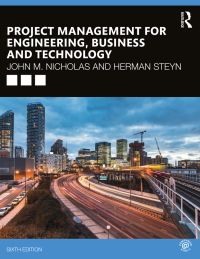1. From information provided here and in Example 16.5, create a list of the projects stakeholders. Expand...
Question:
1. From information provided here and in Example 16.5, create a list of the project’s stakeholders.
Expand Figure 16.6 to include them and show possible links (relations or influences)
between them. For each stakeholder, state its likely interests in the project and ways it could influence the conduct of the project and its outcomes.
Before the Massachusetts congressional delegation could seek federal funding for the Big Dig project, it first had to poll constituents about sensitive transportation issues. Then-Speaker of the House Thomas “Tip” O’Neill wanted to know where his supporters—
voters of East Boston—stood. When first told about the project, he said, “We’re not building any tunnel.” He changed his mind when supporters predicted that “the trade unions are going to be marching on you (if you veto the tunnel)” and assured him that “no homes would be lost” in East Boston. The delegation then faced opposition from the Reagan administration and FHWA, both of which initially argued that the project was ineligible for federal funding.
An early responsibility of the Joint Venture/DPW management team was to prepare an environmental impact statement, the draft of which consisted of several thick volumes. Part I described impacts in 17 categories, including “transportation,” “air quality,” “noise and vibration,”
“economic aspects,” “visual characteristics,” “historic resources,” “water quality,” “wetlands and waterways,” and “vegetation and wildlife.” Under “economic aspects,” it described commercial and industrial activity, tourism, and employment patterns in the affected areas. The report claimed the project would not displace any residences but would relocate 134 businesses with 4,100 employees.
Step by Step Answer:

Project Management For Engineering Business And Technology
ISBN: 9780367277345,9781000092561
6th Edition
Authors: John M. Nicholas , Herman Steyn





